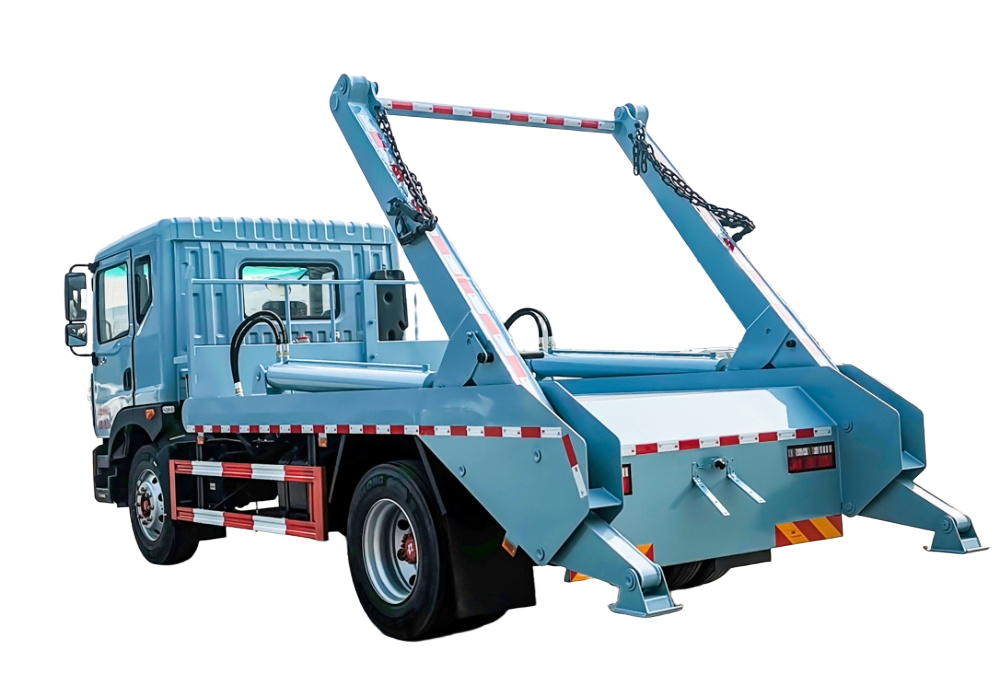Modular vs Integrated Design Architecture: How to Choose the Right Engineering Philosophy for Special Vehicle Development
Modular versus integrated design architecture represents fundamental engineering philosophy decisions for special vehicle development efficiency, yet selecting optimal design approach demands careful evaluation of 6 critical factors. This comprehensive comparison analyzes development speed, customization flexibility, manufacturing complexity, maintenance accessibility, cost implications, and innovation capability across diverse engineering methodologies.
While both approaches deliver functional capability, modular architecture excels in development efficiency and customization flexibility, whereas integrated design dominates in performance optimization and space utilization. We examine decisive trade-offs—from engineering complexity to lifecycle management—using development data from 800+ vehicle projects across various architectural approaches.
Whether prioritizing modular flexibility or integrated optimization, our design philosophy analysis equips you to select the optimal engineering strategy. As China’s leading special vehicle manufacturer with extensive engineering experience, Chengli Group provides uniquely qualified insights into design optimization and development methodology.
Development Velocity and Time-to-Market
Design architecture fundamentally impacts development timelines, engineering efficiency, and market responsiveness across diverse product development cycles and competitive requirements.
Modular Architecture Development Speed
Modular design enables rapid development through component reuse and parallel engineering achieving accelerated time-to-market through standardized building blocks.
Speed Advantages: Modular architecture leverages pre-engineered components and standardized interfaces. Development benefits include:
- Component reuse: 60-80% of components from existing validated modules
- Parallel development: Simultaneous engineering of multiple subsystems
- Reduced testing: Validated modules requiring minimal re-certification
- Rapid prototyping: Quick assembly and configuration testing
Time-to-Market: Modular design achieves 40-60% faster development cycles through component standardization and engineering reuse.
Integrated Design Optimization Process
Integrated design requires comprehensive system engineering with custom optimization achieving superior performance through holistic design integration.
Optimization Benefits: Integrated architecture enables complete system optimization and performance maximization. Engineering advantages include:
- System optimization: Holistic design approach maximizing overall performance
- Space efficiency: Optimized packaging and component integration
- Performance tuning: Custom engineering for specific application requirements
- Innovation opportunity: Clean-sheet design enabling breakthrough solutions
Performance Excellence: Integrated design achieves superior performance through comprehensive system optimization and custom engineering.
Customization Capability and Product Variants
Modular Customization Flexibility
Modular architecture provides extensive customization capability through component selection and configuration achieving diverse product variants with minimal engineering investment.
Customization Benefits:
- Configuration flexibility: Multiple component combinations creating diverse variants
- Customer adaptation: Rapid customization for specific customer requirements
- Market responsiveness: Quick adaptation to market needs and opportunities
- Cost-effective variants: Customization without significant engineering investment
Market Adaptation: Modular design enables rapid market adaptation and customer-specific solutions through flexible component configuration.
Integrated Design Specialization
Integrated design provides specialized optimization for specific applications achieving maximum performance through dedicated engineering and custom solutions.
Specialization Advantages:
- Application optimization: Custom engineering for specific use cases
- Performance maximization: Optimized design for particular requirements
- Competitive differentiation: Unique solutions providing market advantage
- Innovation leadership: Advanced engineering solutions and breakthrough performance
Application Excellence: Integrated design achieves application-specific excellence through dedicated engineering and performance optimization.
Manufacturing Complexity and Production Efficiency
Modular Manufacturing Efficiency
Modular architecture simplifies manufacturing through standardized components and assembly processes achieving production efficiency through repetitive manufacturing.
Manufacturing Benefits:
- Standardized production: Repetitive manufacturing of standard components
- Assembly efficiency: Simplified assembly procedures and reduced complexity
- Quality consistency: Standardized components with established quality processes
- Supply chain optimization: Volume purchasing and supplier relationships
Production Optimization: Modular manufacturing achieves efficiency through standardization and repetitive production processes.
Integrated Manufacturing Complexity
Integrated design requires specialized manufacturing processes with custom tooling and engineering achieving optimized performance through precision manufacturing.
Manufacturing Considerations:
- Custom processes: Specialized manufacturing procedures and tooling requirements
- Engineering complexity: Complex assembly and integration procedures
- Quality validation: Comprehensive testing and validation requirements
- Production flexibility: Custom manufacturing capability and expertise
Precision Manufacturing: Integrated design requires precision manufacturing and specialized production capability for optimal performance achievement.
Maintenance Accessibility and Service Efficiency
Modular Maintenance Advantages
Modular architecture provides superior maintenance accessibility through component-level service and standardized replacement procedures.
Service Benefits:
- Component accessibility: Individual module service and replacement capability
- Standardized procedures: Consistent service procedures across product lines
- Parts availability: Standardized components with volume procurement advantages
- Service efficiency: Rapid diagnosis and component-level repair capability
Service Excellence: Modular design achieves service excellence through accessibility and standardized maintenance procedures.
Integrated Maintenance Challenges
Integrated design may present maintenance complexity through system interdependence while achieving superior performance integration.
Service Considerations:
- System integration: Interdependent components requiring comprehensive service
- Specialized expertise: Advanced technical knowledge for integrated systems
- Diagnostic complexity: System-level diagnosis and troubleshooting requirements
- Service training: Specialized training for integrated system maintenance
Expertise Requirements: Integrated design requires specialized service expertise and comprehensive system knowledge for optimal maintenance.
Cost Structure and Economic Analysis
Modular Cost Efficiency
Modular architecture achieves cost efficiency through component standardization and volume economies achieving economic advantages through scale and reuse.
Cost Advantages:
- Development amortization: Engineering costs spread across multiple applications
- Volume economics: Standardized components with volume purchasing advantages
- Manufacturing efficiency: Repetitive production reducing per-unit costs
- Inventory optimization: Standardized parts reducing inventory complexity
Economic Benefits: Modular design provides economic advantages through standardization and volume economies.
Integrated Cost Investment
Integrated design requires significant engineering investment while achieving performance advantages and competitive differentiation justifying premium positioning.
Investment Considerations:
- Engineering investment: Custom design and development costs
- Manufacturing setup: Specialized tooling and production capability
- Performance value: Superior performance justifying premium pricing
- Competitive advantage: Unique capabilities providing market differentiation
Value Justification: Integrated design justifies investment through performance advantages and competitive positioning.
Innovation Potential and Technology Advancement
Modular Innovation Framework
Modular architecture enables continuous innovation through component evolution and technology integration achieving advancement through systematic improvement.
Innovation Benefits:
- Component evolution: Continuous improvement of individual modules
- Technology integration: New technology adoption through module updates
- Innovation speed: Rapid technology deployment through modular updates
- Risk management: Controlled innovation through component-level development
Systematic Innovation: Modular design enables systematic innovation through component evolution and technology integration.
Integrated Innovation Opportunity
Integrated design provides breakthrough innovation opportunity through holistic system development achieving revolutionary advancement through comprehensive redesign.
Innovation Advantages:
- Breakthrough potential: Revolutionary design enabling significant advancement
- System optimization: Holistic innovation across entire vehicle system
- Competitive leaps: Major performance advantages through integrated innovation
- Technology leadership: Advanced engineering solutions providing market leadership
Revolutionary Innovation: Integrated design enables breakthrough innovation and revolutionary performance advancement.
Decision Framework: Choosing Your Optimal Design Philosophy
Modular Architecture: Ideal Applications
Best suited for organizations prioritizing:
- Development speed and time-to-market acceleration
- Customization flexibility and market responsiveness
- Cost efficiency and economic optimization
- Service accessibility and maintenance simplification
Optimal scenarios include:
- Diverse market segments requiring multiple product variants
- Cost-sensitive markets prioritizing economic efficiency
- Rapid development requirements and competitive pressure
- Service-intensive applications requiring maintenance accessibility
Integrated Design: Strategic Advantages
Preferred for organizations emphasizing:
- Performance optimization and competitive differentiation
- Application specialization and market leadership
- Innovation breakthrough and technology advancement
- Premium positioning and value justification
Ideal applications include:
- Specialized applications requiring maximum performance
- Premium markets justifying engineering investment
- Competitive environments requiring differentiation
- Innovation-driven markets rewarding technological advancement
Performance Benchmarking and Development Analysis
Modular Architecture Performance:
- Development speed: 40-60% faster time-to-market
- Customization capability: 10-50 product variants from standard modules
- Cost efficiency: 20-35% development cost reduction
- Service accessibility: 90% component-level maintenance capability
Integrated Design Performance:
- Performance optimization: 15-30% superior application-specific performance
- Innovation potential: Breakthrough capability and technology leadership
- Market differentiation: Premium positioning and competitive advantage
- Engineering excellence: Custom optimization and specialized capability
Implementation Strategy and Transition Planning
Modular Implementation:
- Component standardization: Systematic development of standard modules
- Interface definition: Comprehensive interface standards and protocols
- Manufacturing optimization: Production process standardization and efficiency
- Service training: Standardized maintenance procedures and parts management
Integrated Implementation:
- System engineering: Comprehensive design integration and optimization
- Manufacturing capability: Specialized production processes and expertise
- Quality validation: Comprehensive testing and performance verification
- Market positioning: Premium positioning and value communication
Ultimately, modular architecture excels for organizations requiring development speed and customization flexibility, while integrated design serves applications demanding performance optimization and competitive differentiation. Your ideal choice depends on whether development efficiency and market responsiveness (modular) or performance excellence and innovation leadership (integrated) aligns with market requirements and strategic objectives.






